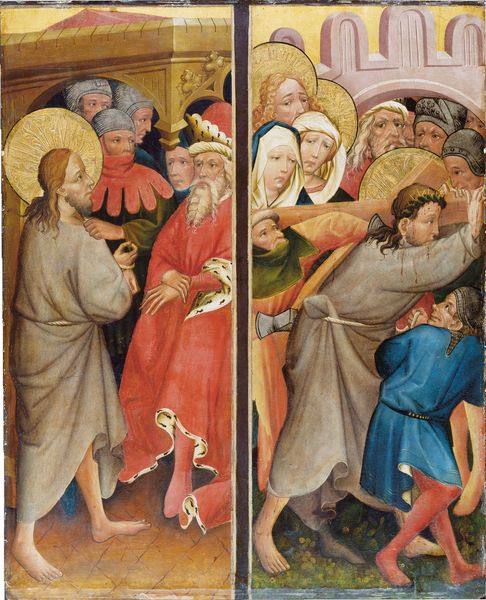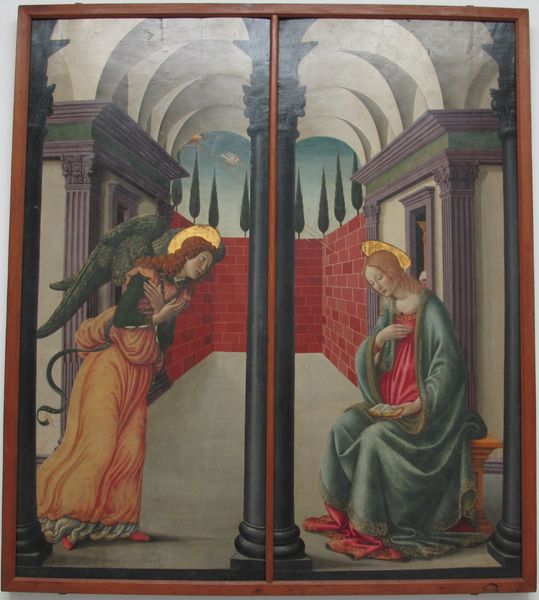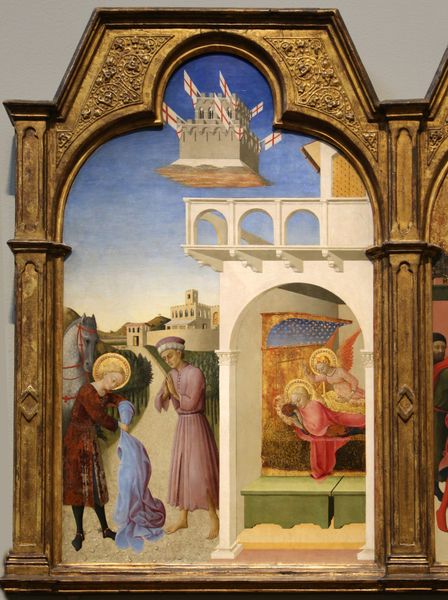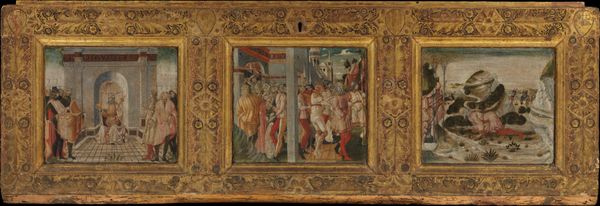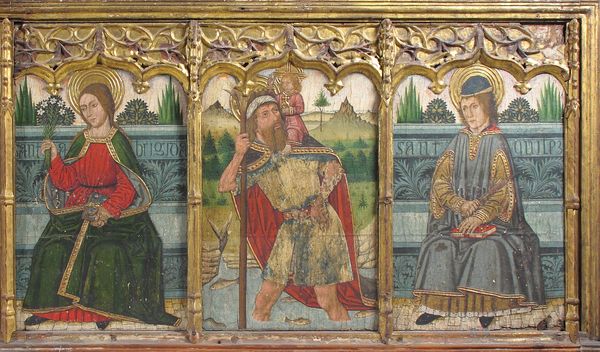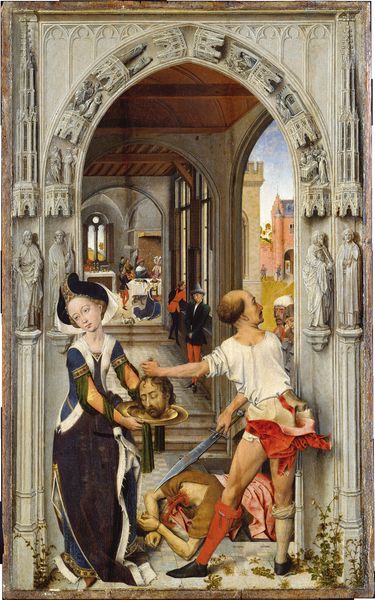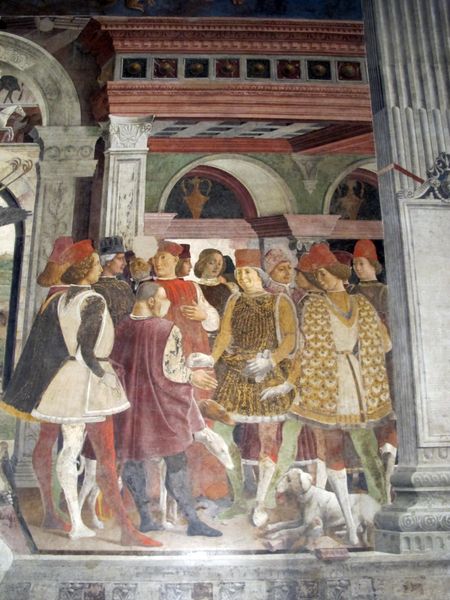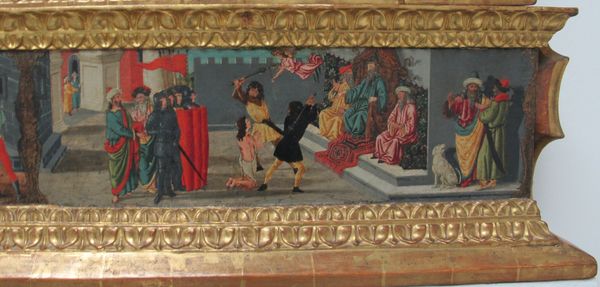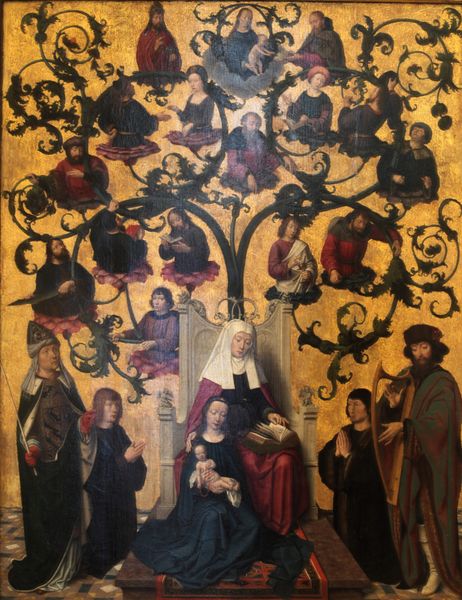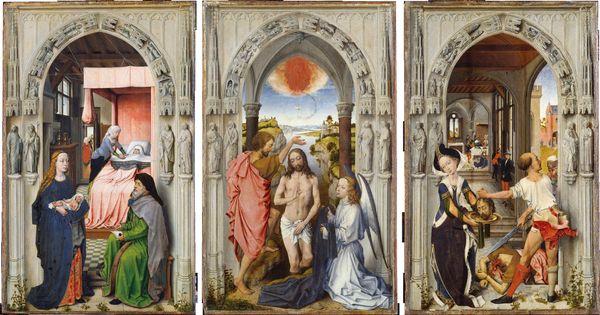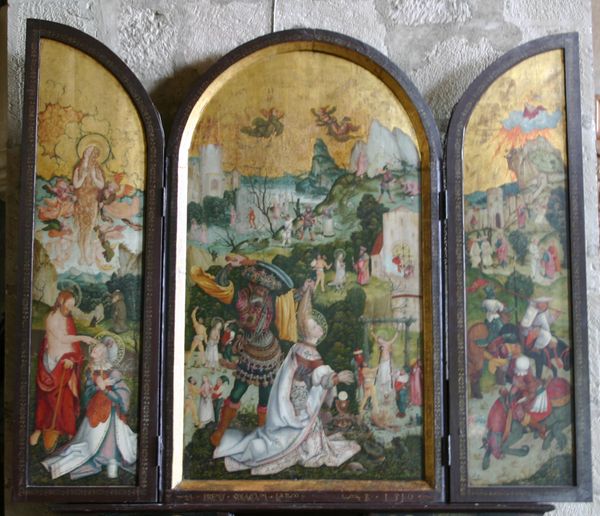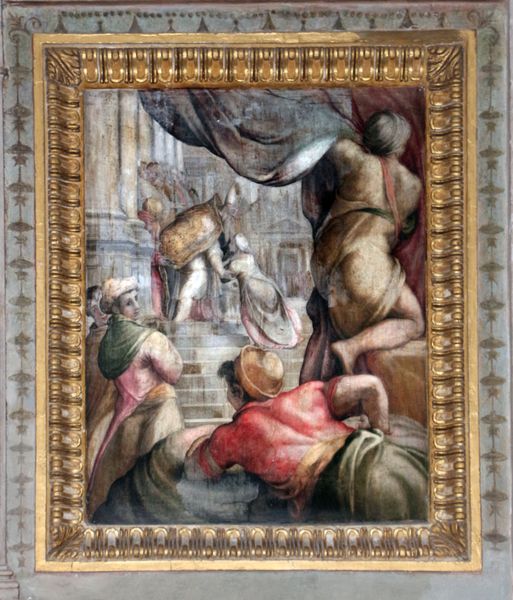
panel, oil-paint
#
panel
#
narrative-art
#
oil-paint
#
figuration
#
oil painting
#
history-painting
#
northern-renaissance
Copyright: Public domain
Curator: This altarpiece by Hans Holbein the Elder, created around 1502, presents a fascinating Northern Renaissance depiction of Christ's Passion. Editor: Immediately striking are the muted tones, despite the use of oil on panel, and the constrained drama – it’s somber, almost static, even with all those figures. Curator: Well, consider that Holbein was working at a time of immense social upheaval. Religious tensions were escalating, and anxieties about the corruption of the church were prevalent. I think that the controlled chaos we see here speaks to that unease. The composition is split into two distinct scenes that portray moments during The Passion. On the left is the presentation to Pontius Pilate and to the right the carrying of the cross. The repetition and mirroring invite consideration of both narratives, emphasizing the inevitability of suffering and death. Editor: Yes, the composition with its vertical format certainly draws the eye upward, emphasizing the architectural setting that frames each scene; however, it's almost too neat, which does dampen the sense of immediacy and emotional rawness. Holbein clearly focused on rendering each individual precisely, but the faces offer limited psychological insight and appear somewhat detached from their narrative roles. The color palette, largely somber, reflects this introspective quality, with the muted blues, reds, and browns harmonizing rather than contrasting. Curator: But isn’t it precisely in this restraint that we see a reflection of the anxieties and the period's changing religious views? The altarpiece was, after all, commissioned for a church—a public space where such anxieties played out in the social sphere. Holbein here depicts a historical and cultural landscape fraught with tensions. This can be seen by the distinct separation of elites and lay people within the artwork itself; these class divisions, common in the Renaissance period, were only being exacerbated in this time as they came into more frequent social friction due to widespread dissemination of information that could now occur because of printing and publishing technologies. Editor: I will grant you that the sobriety contributes to a unique emotional tone. The architectural framing emphasizes this sense of constructed reality, the proscenium arch through which a sacred narrative is reenacted for our contemplation, inviting reflection on human suffering and salvation in an ever evolving, often painful reality. The scenes play out almost like carefully choreographed events and Holbein emphasizes control of artistic vision. Curator: Ultimately, this is what makes this piece by Holbein such an important document of the time. It's not merely a religious painting but a social artifact that gives voice to complex interactions of power, faith, and society on the cusp of major transformation. Editor: Absolutely. A visual hymn—one of profound introspection.
Comments
No comments
Be the first to comment and join the conversation on the ultimate creative platform.
